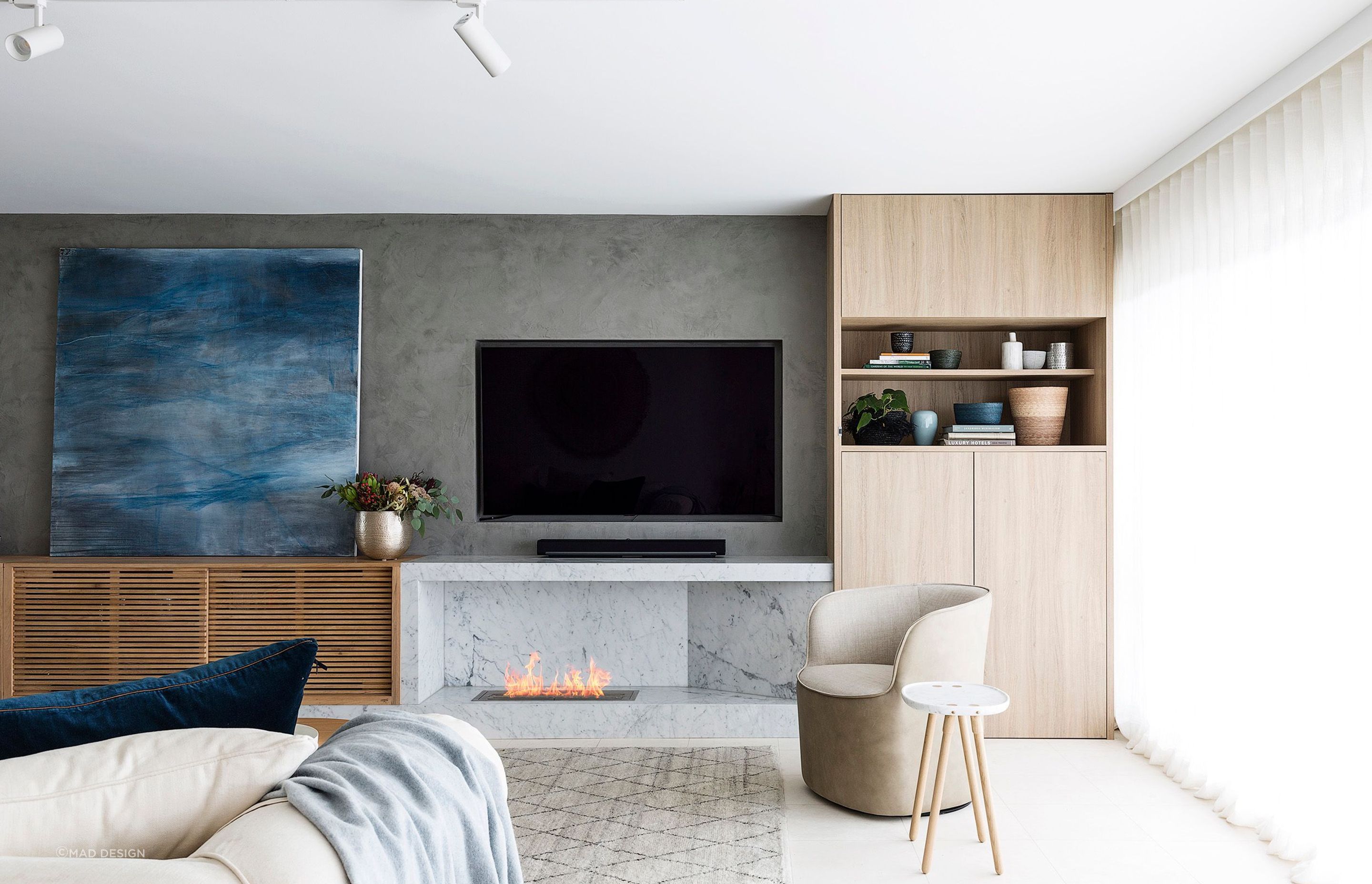Is an indoor ethanol fireplace right for your project?
Written by
11 June 2024
•
5 min read

Ethanol is a clean-burning fuel source that doesn't produce carbon monoxide, which allows for ethanol firebox installations without requiring a flue. This can save thousands of dollars during installation and provides greater design flexibility, enabling fireplaces to be self-contained, freestanding statement pieces.

Design freedom

“Ethanol fireplaces can be placed in areas where they would have been restricted before,” says MAD Design’s Simon Cullen. “Especially in multi-residential constructions and developments where traditionally you would have been limited to a penthouse for a fireplace because of the flue requirements.”
The self-contained nature of ethanol fireplaces allows apartments, multi-storey residential homes, hotel lobbies, restaurants, and bars to benefit from the warmth and aesthetic that a fireplace brings.
“Without the need for a flue and other connections, the freedom of design is appealing to customers and design professionals. There are quite a few fire installations that you can only achieve with an ethanol fireplace. Fireplaces for natural stone cavities in the middle of a room, dividing walls, open fireplaces and custom designs with glass on either side can often only be achieved with ethanol.
“Having a TV above an ethanol fire is also very popular – it is much easier to place a TV in a recess above an ethanol fireplace and not have it affected by heat and the disruption of a flue running through to the roof.”
Architects and designers can also specify custom ethanol fireplace installations – whether it's within an open benchtop or porcelain cavity – or select a firebox configuration from MAD Design that's best suited for their project.
“You can also renovate these areas and move our fireplaces as required because the fireplace is not structurally stuck there. You can relocate that fireplace provided you have the appropriate finishes and clearances.”

Determining whether an ethanol fireplace is the right option for your client
Ethanol fires provide cost-savings on flue installation and service connections when a fireplace doesn’t need to be the primary source of heat. Understanding the client’s needs and how they will be using their fireplace is crucial when determining if ethanol is a suitable option.
The heat generated by an ethanol fire is directly influenced by its size. Depending on the size of the ethanol burner, an ethanol fire can heat a room size from 20sqm to 195sqm or 1.7kw up to 13.5kw with the heat output of an average ethanol firebox anywhere from 40 to 60sqm.
“Ethanol fires don’t produce as much heat as a wood or gas fireplace, but they run at 100 per cent efficiency because they don’t have a flue. This means the heat can’t go anywhere else but into that living space, whereas most traditional fireplaces can lose up to 30 to 60 per cent of their heat through a flue system.”

Most homes have an efficient reverse cycle system used as the primary source of heating and cooling, but the desire to have a fire as a focal point, a place of relaxation and ambience remains – this is where ethanol fires are ideal.
“If the client needs a primary source of heat for the whole home, if they’re going to run that morning to night, then a wood or gas fireplace is going to be the most appropriate and user-friendly option. If they have that main source of heating covered and the customer wants that fire feature for entertaining and ambience, that’s when ethanol is a great choice – they’re going to get that at a reasonable cost, they’re going to get it using renewable green energy, and it’s going to suit the space and open up funds for other projects that they want within the home.”
A common misconception is that ethanol fireplaces don’t produce a real flame.
“They’re the closest thing you can get to a real wood-burning flame,” says Cullen. While gas fires produce a pressurised flame that sits stable with logs and media often placed on top to create movement, an ethanol flame moves around within its environment with a natural rhythm.

The sleek lines and minimal zero clearance design of the EcoSmart XL700 Ventless Ethanol Burner is an example of the elegance this type of fireplace can bring to both residential and commercial settings.
Easily integrated into bespoke designs – from specially-made cabinetry and media units to walls, stone benches and pillars – the bioethanol produces a beautifully orange, natural flame without producing by-products such as smoke, soot or ash.
Outdoor ethanol fireplaces
Designs from MAD Design such as the EcoSmart Manhattan 50 Compact Ethanol Fire Table showcase the possibilities ethanol fires can also offer in outdoor settings.
Taking cues from one of the world’s most densely populated cities where square footage comes at a premium, bringing the need for form and function, this fire pit has a self-contained energy source, generous sideboard and portable construction – making the most of a small space.
Fuelled by environmentally friendly bioethanol, the multifunctional design means users can enjoy the ambience of a real fire without the inconvenience associated with burning real wood. Simply unbox the table, position it where the client wants, and it’s ready to operate.

Explore more stunning ethanol fireplaces from MAD Design on ArchiPro.